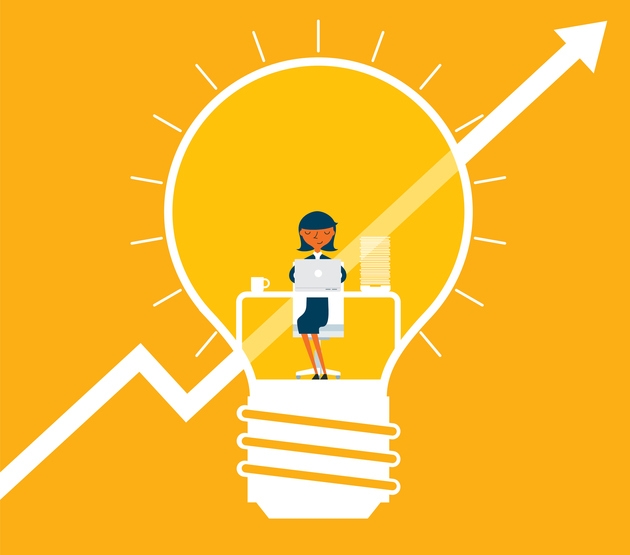You have /5 articles left.
Sign up for a free account or log in.

iStock/sorbetto
Raised by a high-school-educated single mom, I was the first in my family to go to college. I got a master’s degree, a Ph.D., a second master’s degree and, finally, my dream job: a tenure-track position at a prestigious university.
I became a professor and scientist because I wanted to help people live healthier and happier lives. I wanted to discover, understand, mentor and have a profound impact.
And for eight years, I was, in fact, a professor, a scientist supported by the National Institutes of Health and a sought-after adviser. I led clinical trials and published dozens of research papers. I taught and mentored students, residents, postdocs and junior faculty. I held national leadership positions. I led a team of bright and talented people doing what often felt like impossible health-tech research. And I was about to be tenured and have job security until retirement. But the profound impact on people’s lives? That was still missing.
So I did something I thought I’d never do: I walked away from it all. I left my research, my team and my mentees. (I also walked away from an amazing benefit for my kids: 70 percent off their college tuition or 100 percent off if at a less expensive college anywhere in the country.) People leave universities all the time, but it’s often for another university offering comparable benefits, if not more. Instead, I left the security of an academic position for a health-tech start-up, where nothing is guaranteed.
My move surprised the university and scientific community. It’s rare to find someone who has leaped from the ivory tower to a tech start-up. But I’m not the only one.
Two days before starting my new job, I read an article in The New York Times about economists leaving prestigious universities to join tech giants like Facebook, Microsoft, Amazon and newer companies like Uber and Airbnb. So why are people leaving academe for up-and-coming tech companies? A few reasons:
- Less bureaucracy. Academe can be a slow, bureaucratic system. People spend more time cutting through red tape than getting their work done. Tech companies require employees to innovate and work quickly. There’s no time for bureaucracy.
- Big data. Academic researchers can waste a lot of time, money and resources to collect data of any value. Tech companies collect endless amounts of data, often by default. Many companies are doing amazing things with their data right now.
- Impact. In academe, people wait too long for research findings to affect the world. Tech companies move fast. People can make a difference today.
Why I Left
My own story is a case in point. For years, I studied how to improve people’s health. I built and tested health-promotion programs for people with diabetes. I wanted them to work and to help as many people as possible.
But if a program worked, it helped only the people in my research trials and no one else. Why? As studies have found, it can take an average of 17 years for research to have any impact in the real world, if at all. That’s just way … too … long.
Before 2008, I promoted health in the most low-tech, least scalable ways, with flip charts, printed materials and people like community health workers, dietitians and certified diabetes educators. But in 2008, I realized the world was headed in a different direction. As I held my first smartphone, I asked myself, “How can I use this device to promote health? And how can I do it more effectively and on a larger scale?”
Health apps were just starting to gain traction, and developing one seemed out of reach for me and my small team. So we built a website called Diabetes MAP to encourage people to take their medications. But what you won’t find in my research articles are all the challenges we faced just building Diabetes MAP. It was complicated, delayed and frustrating.
My colleagues at other universities all agree: developing health tech in academe is slow and painful. It’s difficult to attract, hire and retain the right people to make it happen. There’s a surplus of behavioral scientists but few nonscientists with expertise in user interface (UI) and user experience (UX), graphic design, front- and back-end software development, and technical project management. Some of the reasons for this are:
- They’re underpaid. Tech people can easily make six figures in the commercial world. In academe, you usually only make that much if you have an M.D. or Ph.D.
- The environment stifles creativity. Tech people would rather work in creative environments and around like-minded people -- in coffee shops or co-working spaces with others like them. Being bound to a cubicle from nine to five doesn’t appeal to them -- or to anyone, for that matter.
- They want to use modern tools. Tech people expect to use the latest tools to get work done -- like Slack, Asana, Facebook Workplace, Jama and Jira instead of landlines, Outlook or pagers.
The result? Health tech in academe gets bootstrapped together, breaks and has to be rebuilt over and over again. More headache, more expense and more time. Diabetes MAP was conceived in 2009. By the time we built and rebuilt it (four times) and tested it, eight years had gone by!
Research trials that test off-the-shelf technology can take just as long. In 2016, JAMA published a paper about a weight-loss intervention with an activity tracker. The paper came out six years after data collection began, and, presumably, eight years after the study had been conceived. (It was funded by the NIH -- add two years to secure funding.) Most notably, the tracker that was studied had been discontinued by the time results were published.
The digital ecosystem changes on a dime. Research can’t keep up. In the past eight years, we’ve seen 10 versions of the iPhone, the introduction of the iPad, the launch of the Apple Watch -- not to mention all the versions of Android and PC. In 2008 and 2009, a browser-based intervention like Diabetes MAP seemed innovative and worth our time and resources. But by the time we had completed our research, people had moved on. Now, most people wear a smartwatch or activity tracker that monitors their health or use a health app on their mobile device.
What’s more, engagement with academic-made websites or apps (for example, opening it, clicking around and coming back) is often low. We don’t realize that until after our studies are over, and we’ve sacrificed a lot of time, money and human capital.
The Future Is Now
To develop digital health tools that people use and are effective, we must work with UI/UX experts, graphic designers and technical project managers. Such professionals know how to create engaging digital experiences but may not know how to use their skills to improve health behaviors and outcomes. We need to team up for the magic to happen.
Can that magic happen in academe? Is it possible for the best and the brightest digital health teams to move at lightning speed in the ivory tower? I asked myself that question when deciding whether or not to jump ship and leave my university.
In full disclosure, I was married to the academic dream. I wanted the answer to be yes. I wanted to stick around to see the yes happen, and to pioneer its reality. But like someone in a marriage destined for divorce, I had to accept the answer was “not anytime soon.”
By far the greatest casualties in my academic breakup were my relationships with the people in my lab and the people who had invested in my career. I didn’t want those bridges to burn, but (as my husband predicted) when you disappoint and leave, people will burn the bridges for you.
My bulleted love letter to all the people with whom I had the privilege of working for 17 years is:
Thank you …
- for showing me how to succeed within the walls of academe,
- for inspiring me to create my own path and
- for motivating me to be better, faster and stronger -- wherever that may be.
When I left my university, I gave up my principal investigator status to someone I had mentored for six years. If anyone can be a pioneer, she can. And I want that for each of you in that position. To be successfully wed to academe, an up-and-coming scientist must:
- Challenge the status quo.
- Create nontraditional labs with different players, such as a UI/UX person and graphic designer.
- Learn why you need these players, including project managers -- both technical project managers and research project managers, because if you are creating and evaluating a digital intervention, you’ll need both.
- Learn how to work with them. (Here are some tips for working with a designer and for working with UI/UX experts.)
- Use software (Slack, Asana, Jira) to accelerate the speed at which work gets done
- Invest in your research staff. (They are everything!)
- Create work processes that optimize efficiency and reduce bureaucracy.
- Don’t hold on to what is broken. Let it go!
Today I work with a team of people outside academe who understand design, development and engagement. They want me -- a social psychologist, behavioral scientist and expert in health behavior and outcomes -- to complement their expertise in tech. We’re using the latest evidence and tech to make managing diabetes simple, awesome, cost-effective and evidence based. And we’re doing it right now.
I want academe to have that capacity, and I hope I will see it happen. One day.




